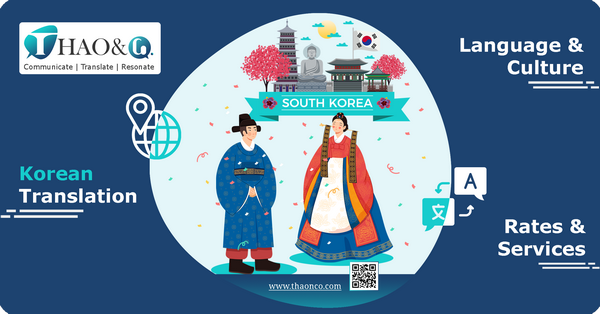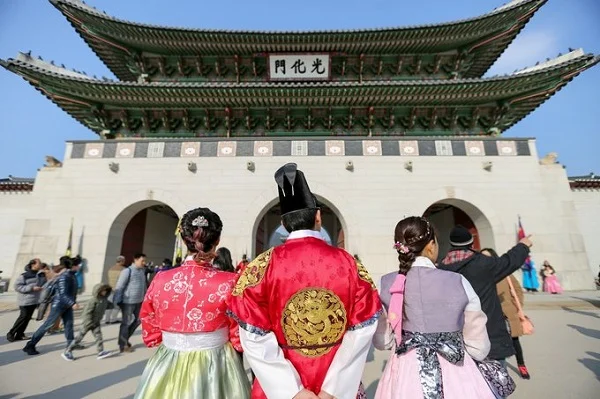Korean is created from unique and distinct vowels and consonants. This makes Korean translation a journey to explore the special characteristics of this language.
Therefore, translators may face obstacles in crafting high-quality translations. So, what makes Korean translation special? Let’s find out!
Every language stands as a crucial role in culture and daily life. Korean is no exception, highlighted by its writing system and sentence structure.
● Extensive vocabulary: With over 1,1 million words, far more than 300,000 in English, paraphrasing is often employed when no direct equivalents exist in the target language.
● Sentence structure: Unlike Vietnamese and English, Korean follows a “Subject – Object – Verb” structure. Native speakers also tend to omit subjects or objects in casual speech.
● Grammar: Regarded as one of the most challenging one in the world.
👉 Translators must have extensive knowledge and experience in Korean.
Korean culture greatly influences its language. Traditional values are integrated into modern entertainment and beliefs. As such, translators need to continually update their knowledge and current trends.
Korean interpreters and translators should also get exposed to cultural contexts to deliver natural and up-to-date translations.

The South Korea has made exceptional progress in various fields in recent years. Korean translation is one of the key contributing factors.
South Korea’s massive entertainment industry is a multi-billion-dollar sector driving significant national economic growth.
K-pop and K-drama both have enormous global appeal, making Korean translation essential for reaching wider audiences.
Thus, globalization strategies are crucial to maintain the “hotness” in the entertainment industry. At this point, Korean translation helps eliminate language barriers in
Technology has always been the leading sector of South Korea’s economy, with major tech giants are SK Telecom, Kakao, and Naver.
Korean translation is then considered a “lucrative land.” With localization, technical products like software, apps, and websites become highly compatible with local users.
The South Korean manufacturing sector has long been famous for high-quality products. South Korean companies have also expanded into new markets.
Local giants like Samsung, LG, and Hyundai Motors have increasingly established manufacturing plants worldwide.
Technical translation is essential, especially in technology transfer. This also ensures thorough understanding in the manufacturing processes.
South Korea excels in healthcare and beauty worldwide. Many businesses invest heavily in research and product development.
The country leads the world in advanced beauty technologies, such as stem cell technology, cosmetic surgery, and laser technology.
This sector draws considerable international attention, making specialized translation services in this field highly sought after.
Translators need to possess a strong understanding of specialized knowledge and industry terms to provide the accurate translations.
South Korea is a global tourist attraction. In 2019, the country’s tourism industry contributed a remarkable 8.3% to the national GDP.
What makes the travel and tourism industry of South Korea successful? It lies in the promotion of its cultural identity.
This can be seen in various media and excellent TV shows. Korean translation also plays a vital role in making these strategies successful.

Korean translation rates are not fixed and depend on various factors.
You can discuss with your chosen translation agency to get a quote. This helps enhance the quality and avoid incurring additional costs.
Thao & Co. swiftly provides a detailed quote before starting any projects, so your translation rates are always upfront.
Translation plays a crucial role in various fields. Therefore, choosing a professional Korean translation service is a challenging task.
So, where to seek a high-quality Korean translation service provider?
The translation agency must have expert linguists, cutting-edge translation technology, effective workflow, and extensive experience in similar projects.
Let Thao & Co. take the heavy lifting! We offer a comprehensive suite of Korean translation services, paired with
We’re here to provide you a seamless translation experience.
You can visit our Get a Quote page to connect with Thao & Co., or go to Thaonco.com for more information!